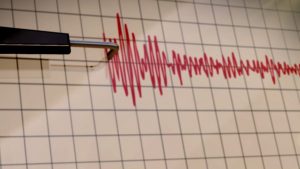By Sally Hayden
The rapidly escalating toll of people killed in Nepal’s earthquake could reach 10,000 — as rescuers run out of the time still needed to discover possible survivors of Saturday’s disaster.
Prime Minister Sushil Koirala voiced the estimate on Tuesday, as locals vented their frustration at what they perceive as the government’s slow response to the tragedy.

Speaking to Reuters, Koirala also said the quake had set the country on a “war footing,” and the government was doing all it could to distribute emergency and rescue relief. “It is a challenge and a very difficult hour for Nepal,” he added.
Related: “The ground you think is solid suddenly gives way”: At least 4,000 dead in Nepal earthquake tragedy. Read more here.
The recorded death toll from Saturday’s 7.8 magnitude earthquake is at 5,057, but this doesn’t include assessments of the disaster’s impact on many rural and hard-to-reach areas. A further 250 people are reportedly missing after a mudslide hit a village near the earthquake’s epicenter on Tuesday, according to AP.
Families have formed tent cities across Kathmandu, setting up camp beside the country’s army headquarters and on the courses of the Royal Nepal Golf Club.
People in Nepal remain anxious about repeated tremors. At least 15 aftershocks shook the country within the 24 hours after the initial earthquake — itself the worst disaster to hit the country since 1934.
Related: Videos emerge of climbers fleeing Mount Everest avalanche after Nepal quake. Read more here.
Casualty reports continue to come in from other impacted areas. On Tuesday, Nepal’s National Emergency Operation Centre announced that 18 people had died at the Mount Everest base camp. So far 13 of the bodies have been recovered, nine of which were Nepalese, along with two Americans, an Australian, and a Chinese citizen.
Wesley Pryor, a rehabilitation advisor Handicap International, spoke to VICE News after getting back from the Gorkha district — the area believed to be at the epicenter of the earthquake.
Pryor said that on Sunday night he slept on a football pitch there with several hundred locals, scared to return to their homes. “Many homes were just cracked and unstable, rather than toppled,” he added.
Pryor also visited Dhading district, which he said visually looked much worse than Gorkha. He said that in Dhading, “there is a really significant need for urgent medical support and follow up.”
However, in terms of urgent response, Pryor admitted that there are some regions that may still not have been reached by anyone. “You’re looking at a four-day walk to some of the outer areas,” he said. “And airlifts weren’t possible on Sunday because of cloud cover.”
In terms of an urgent medical response, Pryor told VICE News that: “Certainly for now [the most pressing thing is] supporting injured people. There are still people who are not stable. There are many people who are injured and stabilized who need secondary care and surgeries.”
Finding and coordinating transport is a priority when it comes to aid distribution. Referring to the weather, Pryor noted: “The rain has really made us double down on getting logistics organized.” He also said that it had affected response times at some of the hospitals.
Aid money has begun to flow into the country. At least 8 million people were affected by the earthquake, and UNICEF communications manager Rupa Joshi told VICE News on Monday that the most urgent requirements are for shelter and medical aid.
Robbie McIntyre, communications officer with UK-based NGO Save the Children, told VICE News on Monday: “”The most immediate needs in Nepal are related to health, shelter, food, and water, while people also need basic items like soap and blankets. In addition, with the chaos caused by the earthquake, child protection will be a huge concern.”
The United Nations has stated that 1.4 million people are currently in need of food.
Meanwhile, mass cremations are continuing along the river banks in Kathmandu, as locals mourn parents, children, friends, and family members.
Follow Sally Hayden on Twitter: @sallyhayd



